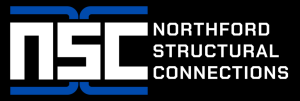The Role of Structural Connections in Earthquake-Prone Areas
Engineers assessing the integrity of structural connections in an earthquake-prone building.
Article Sponsored by:
Northford Structural Connections (NSC)
Northford Structural Connections (NSC) specializes in innovative engineering solutions for enhancing the safety and durability of precast concrete structures. Their patented products, including the Double-Tee Flexible Connection (DTFC) and Double-Tee Connection Pro (DTC Pro), address critical challenges like fatigue, corrosion, and seismic resilience. With a focus on quality and longevity, NSC provides advanced connection systems trusted by industry professionals for both retrofitting and new construction projects.
The Role of Structural Connections in Earthquake-Prone Areas
Introduction
In earthquake-prone regions, the integrity of structures during seismic events hinges on a crucial element: structural connections. These connections serve as the framework upon which safety and stability rest. Optimizing these connections can enhance building performance during earthquakes, mitigating risks associated with seismic activities.
Understanding Structural Connections
Structural connections refer to the joints and interfaces where different structural elements meet. This includes beams, columns, and walls. The effectiveness of these connections impacts the overall resilience of buildings under seismic stress. In seismic engineering, these components are designed to ensure that structures can distribute forces efficiently and maintain structural integrity in the face of earthquakes.
The Importance of Structural Connections
During a seismic event, the ground shakes violently, inducing forces that can cause buildings to sway or even collapse. The DTFC (Dynamic Tension Force Connection) is one design methodology employed to improve the resilience of these joints. Unlike traditional connections, DTFC allows for controlled tension and compression, facilitating movement without fracturing. By incorporating such advanced connection methods, engineers can significantly enhance the earthquake safety of structures.
Types of Structural Connections
There are several types of structural connections commonly used in seismic design:
1. Moment-Resisting Frames: Used to withstand bending and lateral forces, these frames help dissipate energy during an earthquake.
2. Shear Walls: Vertical elements that enhance lateral stability, shear walls are vital for ensuring structures can withstand seismic forces.
3. Braced Frames: These frames incorporate diagonal bracing to resist lateral loads, providing additional stability during quakes.
4. Connection Types: This includes pinned, rigid, and semi-rigid connections, each serving a specific purpose related to force transfer and energy dissipation.
The Role of Engineering in Enhancing Connections
Engineers play a vital role in designing structural connections that meet seismic standards. This involves rigorous calculation and testing to ensure that the connections can perform as required under extreme loading conditions.
Seismic Design Codes
Seismic design codes, such as ASCE 7 and AISC 341, establish guidelines for constructing earthquake-resistant structures. These codes focus on various factors, including the materials used, the geometry of connections, and the types of loads anticipated. Compliance ensures that structures can withstand potential seismic forces effectively, enhancing overall building performance.
Material Considerations
The choice of materials also significantly impacts the effectiveness of structural connections. For instance, the ductility of materials like steel allows connections to absorb and dissipate energy. Conversely, brittle materials can lead to sudden failures during an earthquake. Understanding material properties is paramount in designing resilient connections.
Case Studies: Successful Applications
Numerous successful projects illustrate the importance of structural connections in earthquake-prone areas.
Case Study 1: San Francisco’s Transamerica Pyramid
The iconic Transamerica Pyramid employs a unique framework of triangular connections to enhance stability. This structure stands as a testament to the effectiveness of properly designed structural connections, having withstood numerous seismic events since its completion.
Case Study 2: Tokyo Skytree
Tokyo Skytree, one of the tallest structures in the world, features advanced connection designs incorporating both DTFC and shear walls. It successfully combines architectural aesthetics with structural necessity, demonstrating the importance of innovative connections in high-rise buildings.
Future Directions in Structural Connections
As technology advances, so too does the methodology for designing structural connections for earthquake safety. Builders and engineers are increasingly turning to advanced materials such as fiber-reinforced polymers and smart materials that can actively respond to seismic forces.
Innovative Engineering Solutions
– Smart Sensors: Embedded sensors can monitor structural integrity during an earthquake, providing real-time data that can be crucial for making informed decisions post-event.
– Adaptive Connections: Innovations that allow connections to change their stiffness according to the seismic load can be a game-changer for earthquake safety in the future.
Conclusion
The role of structural connections in earthquake-prone areas cannot be overstated. They are a fundamental aspect of building design and safety, influencing how well structures can endure seismic forces. As engineers continue to evolve their approaches and materials, the potential for improved earthquake safety will undoubtedly increase, offering hope for safer living environments in earthquake-prone regions. Integrating concepts such as the DTFC not only enhances performance but also represents a commitment to advancing structural engineering practices.
A proactive approach in strengthening structural connections will ultimately play a crucial role in minimizing the destruction and saving lives when the next earthquake strikes.
Northford Structural Connections (NSC)
Concrete Strength • Metal Resilience • Connecting Futures
Phone: (203) 777-0751
Email: admin@nscclips.com
Recent Posts
2025 Play Golf World Amateur Championship Registration Opens
News Summary Golf enthusiasts are in for a treat as registration opens for the 2025…
Myrtle Beach Prepares for ONEFlight Myrtle Beach Classic
News Summary The ONEFlight Myrtle Beach Classic is set to take place from May 8-11…
Raleigh Crowned Best-Performing Large City in 2025
News Summary Raleigh, North Carolina, has been named the best-performing large city in the United…
Saginaw Dermatopathologist Struggles with Financial Troubles
News Summary Dr. David L. Stockman, a dermatopathologist in Saginaw, Michigan, faces legal and financial…
South Carolina Shrimper Celebrates Tariffs as a Boon for the Fishing Industry
News Summary In South Carolina, shrimpers like Craig Reaves are optimistic that new tariffs on…
NEAT Bourbon Bar Opens in Myrtle Beach
News Summary Myrtle Beach welcomes the NEAT Bourbon Bar, an exciting venue for whiskey lovers,…
